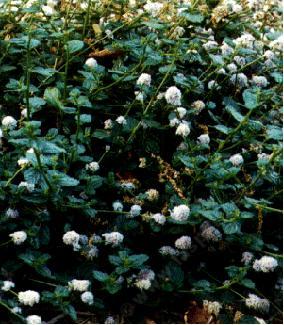Ceanothus griseus
Carmel Ceanothus.
Ceanothus griseus, is a large bush or small tree, with beautiful, large, rounded, shiny, dark green leaves, and blue flowers, which grows very fast up to 8-10 ft. high and 4-6 ft. wide. Ceanothus griseus grows along the coast and in the outer coast ranges of California from Humboldt county south almost to Ventura county. Though growing mostly in the northern coastal scrub, coastal sage scrub, and closed-cone pine forest plant communities, it is easy to grow and maintain along most of the coast, in the coast ranges, and even in the San Joaquin Valley (as C. griseus tolerates garden water). This species of Ceanothus is very adaptable, growing in clay or sandy soils, but is usually short-lived under drip irrigation (does well with microspray irrigation). Bambi really, really likes this species so planting is limited to areas where the deer are infrequent, you have some very good fences, or you live in an area where you don't have to water. Some companion plants are Heteromeles arbutifolia (Toyon), Rhamnus californica (Coffeeberry), Stachys ajugoides (Hedge Nettle), Artemisia douglasiana (Mugwort), Holodiscus discolor (Cream Bush), Leymus condensatus (Giant Rye), Lonicera hispidula (California Honeysuckle), Fragaria californica (Wood Strawberry), and Satureja (Clinopodium) douglasii (Yerba Buena). Ceanothus griseus, called Carmel Ceanothus, adds nitrogen to the soil. Along the immediate coast, in the path of constant salt-laden winds, the plants will grow much lower. Click here for more about Mountain Lilacs.
Ceanothus griseus tolerates sand and clay.
Foliage of Ceanothus griseus has color green and is evergreen.
Flower of Ceanothus griseus has color blue.
Communities for Ceanothus griseus:Closed-cone Pine Forest, Coastal Sage Scrub and Northern Coastal Sage Scrub.
| ph: | 5.00 to 7.00 |
|---|---|
| usda: | 8 to 10 |
| height[m]: | 1.00 to 3.00 |
| width[m]: | 1.00 to 3.00 |
| rainfall[cm]: | 70.00 to 165.00 |




